 Forests in Canada
Forests in Canada
We manage publicly owned forests
Our operations in Canada cover millions of acres of temperate and boreal forests in four provinces: Alberta, British Columbia, Ontario and Saskatchewan. Most Canadian forests are owned by the provincial governments and managed on behalf of the provinces’ people. The provincial governments grant many entities, including Weyerhaeuser, the rights to operate in these forests. Operating entities can include companies in resource sectors such as energy, mining and forestry, as well as tourist operators, trappers and others who use the forest for commercial enterprises.
The forests vary throughout our operating areas. In some places, where the climate is cool and relatively dry, we manage boreal forest. Coniferous trees, such as lodgepole pine, white spruce, black spruce and balsam fir, dominate the area, while tamarack, trembling aspen, balsam poplar and white birch are also present. In other areas, we manage lower-elevation forests composed of aspen, ponderosa pine and Douglas-fir. We also manage forests represented by early-fire-succession tree species such as jack pine, black spruce, poplar, and red and white pine.
FOREST MANAGEMENT
Forest products companies, like Weyerhaeuser, operating in Canada sign long-term license agreements with the provincial governments. These agreements give the company the timber rights and management responsibility for a defined area to support one or more wood products manufacturing facilities. Generally, the licenses are granted for 20 to 25 years and can be renewed every 5 to 10 years.
Canadian provincial governments are ultimately responsible for land-use decisions and the overall management of the forest and associated landscapes, but industry and government work together to develop long-term forest management plans, which are required to keep their operating licenses. These plans are based on a forest policy and legal framework that ensure forest sustainability, adherence to public policy and government regulation, Indigenous engagement and adherence to adaptive-management principles. The plans are also developed with input from other stakeholders, including Indigenous and local communities, tourist outfitters, anglers and hunters, as well as other industries, such as oil, gas and mining.
Our forest management strategy in Canada is based on four principles:
- We believe in practicing ecologically based forest management that will maintain forest ecosystems within the ranges of natural variability.
- We respect the social and cultural considerations that accompany the responsibility to manage public forests.
- We believe in continuously improving our management practices and systems to ensure the long-term economic value of the forest and the viability of our wood products facilities.
- We believe in developing long-term strategies, together with other users of the land base, that respect and support the ecological integrity of the forest and its resources.
ENVIRONMENTAL STEWARDSHIP
Managing for multiple values, such as wildlife habitat and watersheds, is part of every forest management plan we develop. In regions where we operate, specific forest management protocols and strategies have been developed for key species, such as the woodland caribou. Forest management strategies have also been developed for a number of other important species, including grizzly bear, barred owl, trumpeter swan, bull trout and forest birds.
A significant portion of the forests we manage consists of wetlands, rock outcroppings and other areas that do not grow commercial crops of trees but are valuable for biodiversity. In Ontario, for example, the forests we manage have large populations of nesting bald eagles, as well as the region’s largest colony of white pelicans.
Across much of Canada, the forests face continued threats from insect infestations, disease and wildfire. The recent outbreaks of mountain pine beetle in western Canada have heavily affected large tracts of forested landscape and made them more vulnerable to wildfire risk. Because infestations have been spreading rapidly, we have modified our near-term harvest plans to focus on infested and high-risk lodgepole pine stands. This strategy has multiple objectives: to harvest merchantable timber before it is lost to beetle kill, to help slow the spread of the beetle to other susceptible forests, and to remove dead and dying trees that pose a wildfire risk to local communities.
We are also active members of provincial and national forestry associations, such as the Forest Products Association of Canada (FPAC). These associations work with different organizations, including conservation groups, to ensure the forest sector is continually engaged in nationally and globally recognized sustainable forestry activities, and that we are meeting their obligations to maintain and enhance the publicly owned forests where we operate.
Indigenous Communities
Indigenous peoples are an integral part of the communities where we operate. The needs and perspectives of Indigenous communities are relevant to many of our management and business decisions, including the use of public land and resources. We will continue to work with local Indigenous communities to promote, increase and support their participation in the forest sector. Building and maintaining relationships is key to achieving these outcomes.
Our commitment
As responsible stewards of Canadian forests, we are working proactively to build long-term, successful and mutually beneficial relationships with Indigenous peoples whose lands and territories overlap our operational areas.
Framework for building relationships
Federal and provincial governments have a duty to consult with and, where appropriate, accommodate Indigenous peoples on any decision that may adversely affect their claimed or existing Indigenous or treaty rights. This duty stems from the honor of federal and provincial governments and their unique relationship with Indigenous peoples.
We have a framework that is intended to support federal and provincial governments in fulfilling their obligation to respect Indigenous rights, while continuing to acknowledge the importance of Indigenous community participation in the development and use of natural resources.
Rationale
The rationale for this framework ties back to our company’s core values and vision:
- Integrity: Integrity and honesty will form the basis for our relationships with local Indigenous communities.
- Deliver Value: We will pursue contract opportunities with Indigenous businesses that promote productive partnerships and collaborative initiatives with local Indigenous communities.
- Inclusion/Citizenship: We will make employment and other opportunities known and available to Indigenous peoples in areas where we operate, and we will use and recognize the skills and knowledge of Indigenous workers.
Key goals and objectives
- Direct Employment: Create a workforce that broadly reflects the demographics and diversity of the local communities where we operate by developing the requisite job skills.
- Indirect Employment: Purchase competitive goods and services from businesses that reflect the demographics and diversity of our local communities, including Indigenous peoples.
- Business Relationships: Continue to enhance our economic relationships with Indigenous communities through mutually beneficial business arrangements.
- Education and Training: Reinforce the value of education within local communities through the support of Indigenous students and programs, and ensure appropriate training for staff and contractors to address historical and cultural perspectives on Indigenous issues.
- Community Involvement: Foster and promote mutual awareness, trust and understanding between Weyerhaeuser and local Indigenous communities through regular, informal interaction with Indigenous community leaders as well as sponsorship and participation in local Indigenous cultural events.
As a member of FPAC, we support its work to strengthen Indigenous participation in Canada's forest sector through federally supported economic-development initiatives and business investments, strong environmental stewardship and the creation of skill-development opportunities particularly targeted to Indigenous youth.
Two examples of how we are partnering with Indigenous communities:
- Around Grande Prairie, Alberta, we are working with two local Indigenous communities — Horse Lake First Nation and the Aseniwuche Winewak Nation — to identify, validate and catalogue important cultural and traditional knowledge. We are providing financial and in-kind support for these multiyear, multivalued projects.
- We are a long-standing funding partner in a national, multiyear program that provides training for Indigenous youth. The Outland Youth Employment Program provides work experience and training for Indigenous youth from across Canada and prepares them for employment in the forest sector. We currently support OYEP programs in Ontario, Alberta and British Columbia, and we will support the Saskatchewan program when it becomes active. In 2021, we partnered with OYEP on a forestry field education day in Kenora, Ontario, for students at Beaver Brae Secondary School, which has a significant Indigenous population.
RESEARCH AND PARTNERSHIPS
To sustainably manage our forests, we are committed to continuously learning how our activities affect both the forest ecosystem and surrounding communities so we can improve our practices using adaptive management. We frequently partner with other organizations, including universities and science-based entities, to ensure our practices are consistent with the best available science.
One example is our support for caribou research. For more than 20 years, we have worked with government ministries and other stakeholders to participate in research associated with caribou recovery. In Alberta, we invested more than $5 million in caribou habitat research conducted by organizations such as the University of Alberta and the Alberta Regional Caribou Knowledge Partnership. The ARCKP is focused on closing knowledge gaps on caribou, initiating on-the-ground best practices and supporting knowledge exchange, and it’s a good example of how partnership between forest industry companies and the province can benefit communities and ecosystems.
Another example of how we support long-term research is a grizzly bear habitat identification project in the western and southern portions of our operating areas in Alberta coordinated by FRI Research. This multistakeholder, multiyear research project aims to determine long-term strategies for grizzly bear conservation by mapping habitat in the forests we manage. We also have a long-term, research-focused relationship with Ducks Unlimited Canada, which has generated guiding principles for wetland stewardship and forest management and best practices for forest wetland crossings.
Additionally, we have undertaken a number of initiatives to obtain baseline information on the fish and wildlife resources within our operating areas. Research and inventory initiatives include long-term survey programs of nocturnal raptors, songbirds, fish and furbearers. These inventories are aimed at providing benchmark data on species occurrence and distribution throughout our timberlands, as well as trends over time.
By using this website, you agree to our Privacy Policy. California residents: See our CCPA Privacy Notice for details on what personal information we collect and for what purposes.



